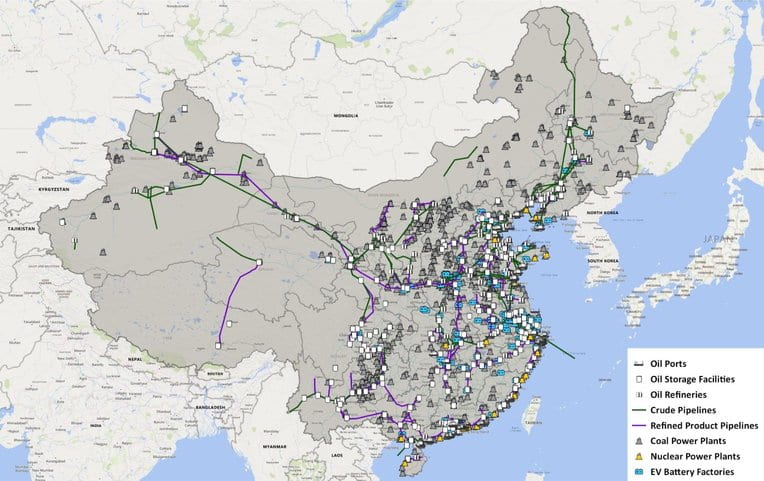HOUSTON – (July 23, 2020) – Rice University's Baker Institute for Public Policy has released its latest China Energy Map, an open-source, interactive chart of the country’s energy infrastructure.
The map was created by Shih Yu (Elsie) Hung, a research manager at the Baker Institute Center for Energy Studies, and Gabriel Collins, the Baker Botts Fellow in Energy and Environmental Regulatory Affairs at the institute.
“We are releasing the Baker Institute China Energy Map in the hope that an open, comprehensive and regularly updated source of vital China energy infrastructure data can help facilitate improved analysis by a broad range of participants,” they wrote.
The map, first released in February 2019 as the China Oil Map, "tracks nearly 4,000 energy facilities in China — it serves as a great resource of facility-level data to both academia and general public," Hung said.
The project has evolved significantly and continues to grow. To more accurately capture China’s complete energy system it now features not only oil infrastructure, but also coal power plants, nuclear power plants and electric vehicle battery factories.
“We hope our map becomes the cornerstone publicly available resource for those seeking to understand how and where energy is produced, imported, transported and consumed in China,” Collins said. “To do that, it is critical to know where the tanks, pipes, power plants and other key energy-related facilities are located. This is a multiyear project and we’re excited to see what happens as we build it out even further and other analysts apply their brain power to the baseline data provided by the China Energy Map.”
To access the map directly, click here. For the data and methodology, click here.
-30-
To schedule an interview with Collins or Hung or for more information, contact Avery Franklin, media relations specialist at Rice, at averyrf@rice.edu or 713-348-6327.
Related materials:
China Energy Map: https://www.bakerinstitute.org/opensource-mapping-of-chinas-energy-infrastructure/.
Collins bio: https://www.bakerinstitute.org/experts/gabe-collins/.
Hung bio: https://www.bakerinstitute.org/experts/shih-yu-elsie-hung/.
Follow the Baker Energy Studies via Twitter @CES_Baker_Inst.
Follow Rice News and Media Relations via Twitter @RiceUNews.
Founded in 1993, Rice University’s Baker Institute ranks as the No. 2 university-affiliated think tank in the world and the No. 1 energy think tank in the world. As a premier nonpartisan think tank, the institute conducts research on domestic and foreign policy issues with the goal of bridging the gap between the theory and practice of public policy. The institute’s strong track record of achievement reflects the work of its endowed fellows, Rice University faculty scholars and staff, coupled with its outreach to the Rice student body through fellow-taught classes — including a public policy course — and student leadership and internship programs. Learn more about the institute at www.bakerinstitute.org or on the institute’s blog, http://blog.bakerinstitute.org.

